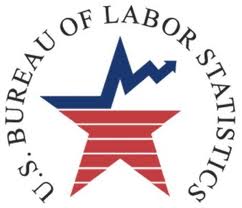Week in Review
Possibly the pivotal event of last week was the publication of the US non-farm payroll figure (NFP) last Friday. The result stunned traders by disclosing that US employers created only 142,000 new jobs during August compared to the forecasted 225,000. After digesting the full implications of this poor showing, economists eventually concluded that the most significant impact will be that it could convince the US Federal Reserve to retain interest rates at historic lows for a prolonged period of time.
Prior to the release, most pundits were predicting a strong performance based on the release of a sequence of encouraging economic indicators by the USA over recent weeks indicating that both its economic recovery and labor market were gaining traction. On a positive note, the unemployment rate did drop during last month to 6.1% from 6.2%. Prominent analysts summarized these result by stating that the fear of quickly rising interest rates has now definitely been quashed. They added that the biggest fear of investors presently was that the Fed could start tapering stimulus rapidly which could produce a serious market correction.
The European Central Bank (ECB) implemented aggressive actions last week in order to suppress deflation; boost a flagging European economic recovery and offset any adverse impacts arising from the Ukrainian/Russian conflict. The ECB cut primary interest rates by another 10 basis points to register both record lows and a minus deposit value. Specifically, the primary lending rate fell to 0.15% while the overnight deposit rate was reduced to -0.20%. In an ensuing press conference, Mario Draghi, the ECB President, further advised that the central bank will instigate a substantial buying program in October with the intent of purchasing a wide-ranging spread of euro-based bonds and asset-backed securities.
What to Expect This Week
The major global economic indicators scheduled for publication this week are as follows.
The Eurozone will launch the week by issuing a key investor confidence index on Monday. Analysts are forecasting a weak result with expectations of a drop to 1.4 from the previous 2.7. The USA will then present its Consumer Credit figure for July which is expected to extend its losses for the third consecutive month.
On Tuesday, the United Kingdom will announce its Trade Balance for July. A weakening European economy could weigh on this parameter. The UK will also disclose its Manufacturing and Industrial Production numbers for July. Expert consensus favors minor improvements. At the same time, Mark Carney, the Chairman of the Bank of England will deliver a key speech to the Trade Union Congress in Liverpool, UK. Dovish comments should dominate by confirming continuous support for the British economy by the BoE. Later in the session, Canada will reveal its Housing Starts for August which are predicted to produce a pullback after months of constant gains. Japan will next proclaim its Machinery Orders for July which is expected to register another decline for the third straight month in a row. The day will finish with New Zealand presenting its Monetary Policy Decision supported by an ensuing Press conference. This event is not expected to generate much excitement with rates remaining on hold.
China will kick-off Thursday by delivering its Consumer Price Index. The People’s Bank of China could instigate fresh stimulus if a value below 2.0% is posted. About the same time, Australia will announce its Unemployment Rate and Employment Change for August. Employers are forecasted to have created about 15,000 new posts. Later in the day, Mario Draghi, the President of the European Central Bank will speak in Italy. However, he is not expected to endorse any of the dramatic comments he provided last week concerning new stimulus measures.
On Friday, the Eurozone will publish its Industrial Production figure for July which should register an increase of 0.6% after falling by 0.3% during the previous month. This major economic region will then release its Employment Change report for the second quarter of 2014. Weak numbers should be printed as a direct result of a stagnating European economic recovery. The USA will next present its Retail Sales for August. After four consecutive months of misses; expectations are consequently very low with a result of 0.3% favored by most pundits. The USA will complete the weak by disclosing a key Consumer Sentiment Index which should generate a reading about the 80 mark.




